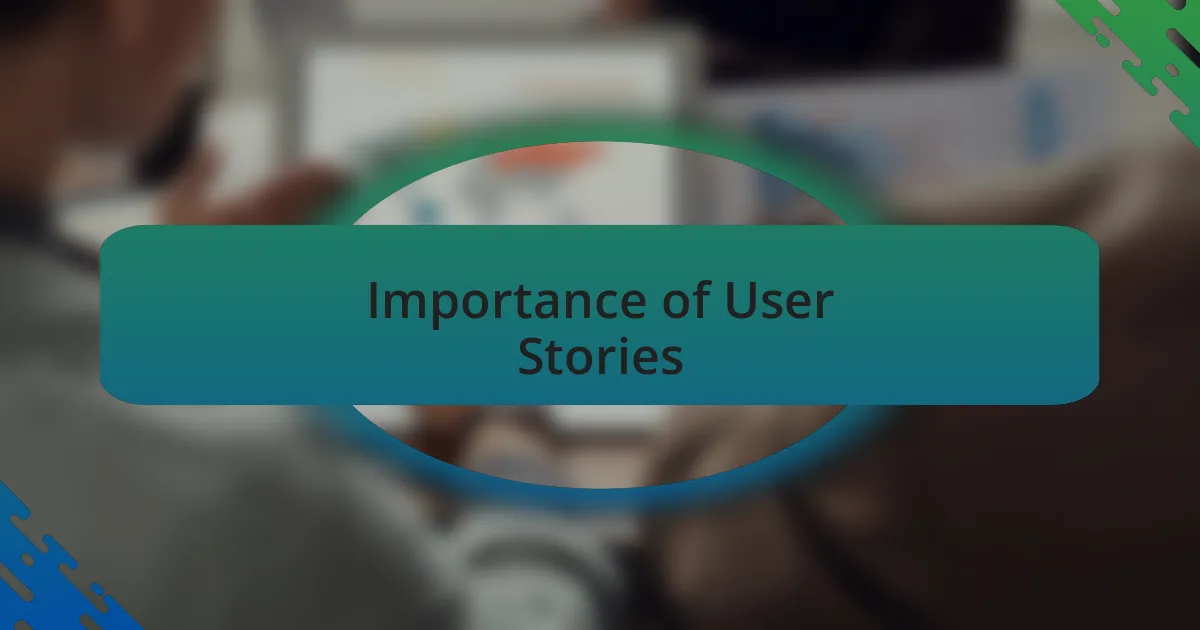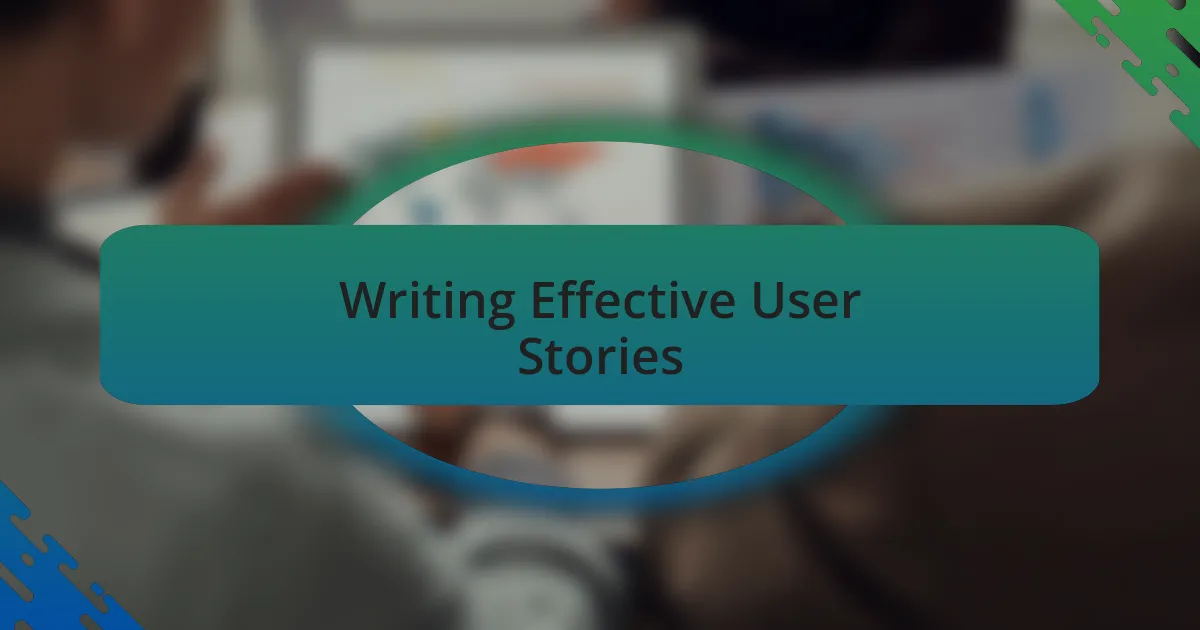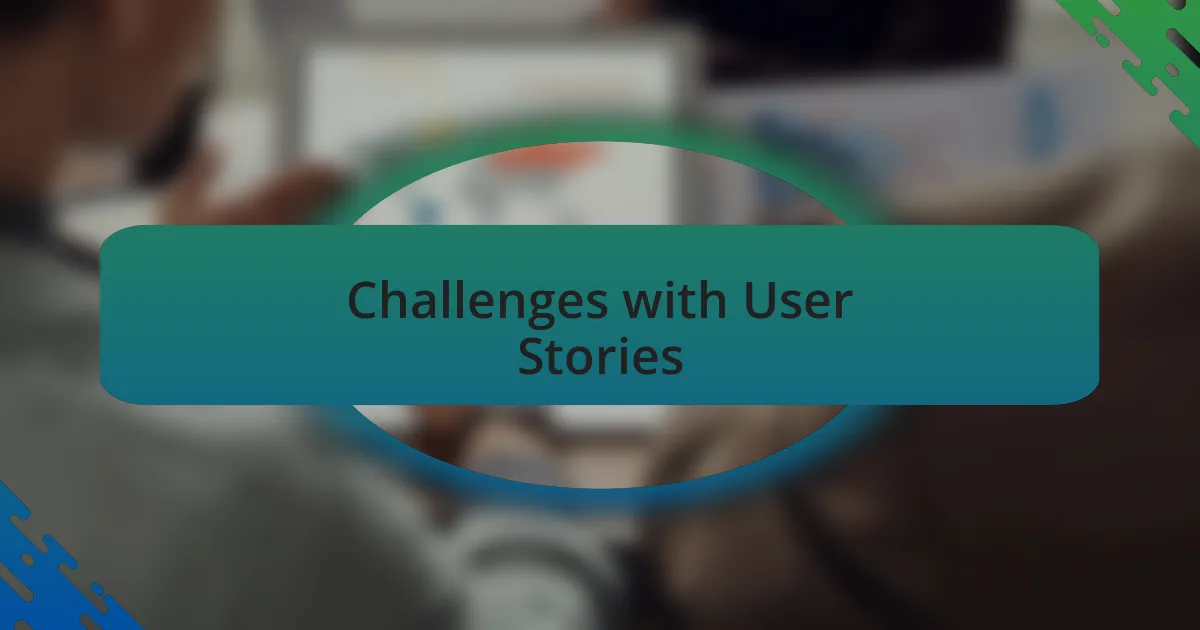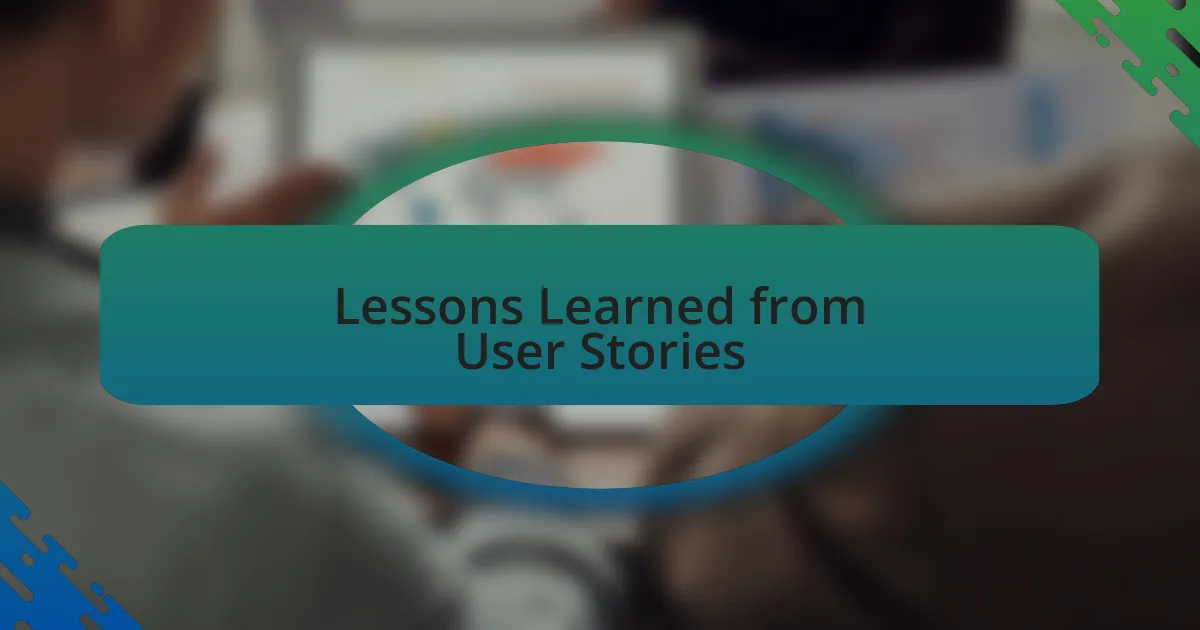Key takeaways:
- User stories ensure development aligns with actual user needs, enhancing product relevance and team collaboration.
- Effective user stories require specificity, clarity, and regular revision to remain relevant and valuable.
- Challenges include prioritization, ensuring shared understanding among stakeholders, and avoiding rigidity in user stories.
- Key lessons highlight the importance of user involvement, clarity in acceptance criteria, and embracing an iterative approach to development.

Importance of User Stories
User stories play a vital role in the development process by ensuring that the focus remains on the user’s needs. I recall a project where we created a feature based solely on technical specifications, only to find out later that it didn’t resonate with the users. This experience underscored how user stories bridge the gap between development and real user experience, heating up the project with relevance that technical requirements often overlook.
Moreover, user stories foster collaboration and communication among team members. There was a time when I facilitated a workshop where we collectively crafted user stories based on feedback from actual users. Seeing developers and stakeholders come together to empathize with the user truly transformed our approach. Isn’t it rewarding when teams rally around a shared vision, ultimately improving the product?
Lastly, user stories are dynamic; they adapt as the product evolves. I remember working on an application where we frequently revisited and refined our user stories based on testing insights. This adaptability made our process not just iterative but truly user-centered. Doesn’t it seem essential to remain flexible and responsive to user feedback in today’s fast-paced development environment?

Writing Effective User Stories
Writing effective user stories begins with a clear understanding of who the user is and what they truly need. I once stumbled upon a project where the team created user stories that were overly broad, leading to countless misunderstandings during development. It was a game-changer for me to learn that specificity is key; by framing the stories around a single user goal, I saw how clarity directly improved our workflow and outcomes. Have you ever felt the confusion that comes from vague requirements?
Additionally, I advocate for using the “As a [user], I want [goal] so that [reason]” format. This structure not only keeps the focus sharp but also reminds the team of the rationale behind the functionality. During my work on a mobile app, I observed that when we applied this format, team members would often bring deeper insights into discussions, enabling us to target features that genuinely added value. Isn’t it fascinating how a little structure can prompt richer conversations?
Finally, reviewing and revising user stories regularly is essential for keeping them relevant. I recall a project where we held bi-weekly sessions to refine our user stories based on user feedback and new market trends. Each iteration brought fresh insights and clarity, allowing the team to steer in the right direction. How often do you find yourself reflecting on whether your user stories still align with user needs?

Challenges with User Stories
When working with user stories, one of the biggest challenges I faced was prioritization. I remember being part of a sprint planning session where we had a long list of user stories, but the team struggled to determine which ones should take precedence. It often felt like we were navigating a maze without a map. I’ve learned that without a clear prioritization framework, it’s easy to lose focus on what really matters for the user experience.
Another obstacle is ensuring that all stakeholders have a shared understanding of user stories. In one project, different team members had varying interpretations of the same story, resulting in conflicting implementations. This not only wasted time but also caused frustration among the developers. Have you ever been in a situation where miscommunication led to a costly rework? It’s a tough lesson, but it drove home the importance of clear communication and alignment within the team.
Lastly, I’ve noticed that user stories can sometimes become static rather than evolving documents. I remember a time when our team became too attached to a set of stories we had written months prior. As we received user feedback, we hesitated to adjust these stories, fearing change. This experience taught me that flexibility is crucial; user stories should be living documents that evolve alongside user needs. How do you ensure that your user stories remain fresh and relevant?

Lessons Learned from User Stories
One key lesson I’ve learned from user stories is the necessity of clarity. I still recall a project where vague user stories led to confusion in the development process. We spent countless hours creating features that didn’t quite hit the mark, leaving both the team and stakeholders frustrated. Have you ever found yourself questioning if you’ve interpreted a story correctly? This experience taught me that detailed acceptance criteria are vital; they serve as a roadmap guiding the team toward a shared vision.
Another important takeaway is the value of user involvement in shaping our stories. In one memorable instance, we invited end-users to share their experiences and pain points in a workshop. Their firsthand insights transformed our understanding and revealed crucial user needs we hadn’t considered. It was a powerful reminder: engaging users in the story-writing process not only enriches the narrative but also enhances empathy within the team. How often do you engage with users to validate your understanding of their needs?
Lastly, the iterative nature of user stories has fundamentally changed my approach to product development. Early in my career, I was hesitant to revisit and revise stories. I learned the hard way when we released a feature built on outdated assumptions, only to discover it missed the user’s expectations. Embracing an iterative mindset allows for continuous improvement and adaptation. It’s refreshing to think of user stories as dynamic assets rather than fixed contracts—how do you keep your team’s mindset open to ongoing adjustments?